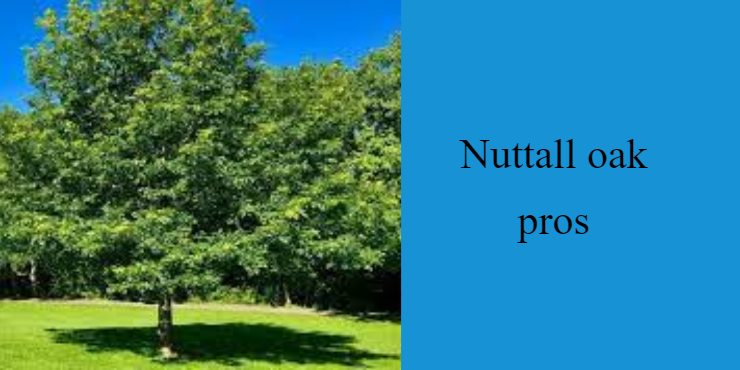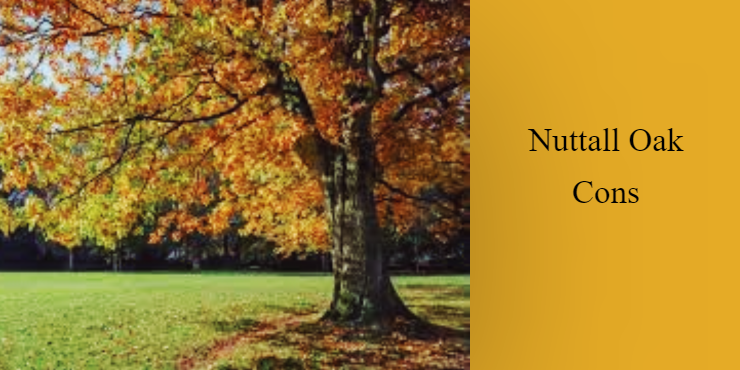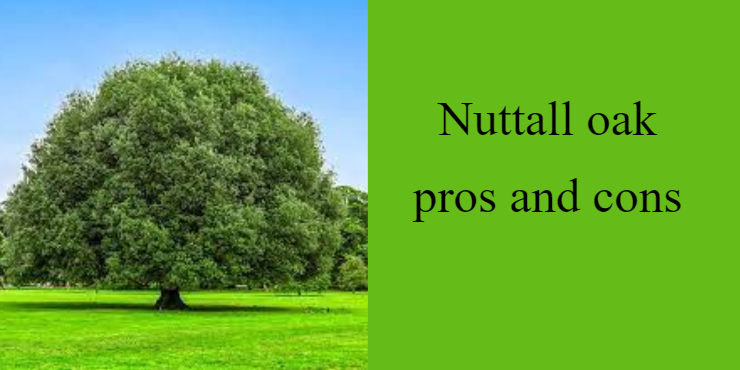Nuttall Oak pros and Cons, scientifically known as Quercus nuttallii, is a deciduous tree native to the southeastern region of the United States. It is a popular choice for landscaping and is often planted in parks, gardens, and urban areas. If you are considering adding Nuttall Oak to your landscape, it is important to weigh the pros and cons to determine if it is the right tree for your needs. Here are some key advantages and disadvantages of Nuttall Oak and Cons: The best 10 type tips
Nuttall Oak Pros and Cons
Nuttall oak pros and cons (Quercus texana), often referred to as pin oak or red oak, is a beautiful and resilient tree species native to North America. While it is prized for its many benefits, it’s essential to weigh both its pros and cons before deciding to plant it on your property or in your community. In this article, we will explore the Nuttall oak’s advantages and disadvantages, helping you make an informed decision about whether this tree is the right choice for your landscaping needs.
Nuttall oak pros : 5 Type

Nuttall Oak Pros and Cons is a company dedicated to providing top-notch services related to the cultivation, preservation, and maintenance of Nuttall Oak trees. With a team of highly skilled arborists and tree care professionals, we specialize in ensuring the health and vitality of Nuttall Oaks, a species known for its exceptional aesthetic appeal and environmental benefits.
- Fast growth: Nuttall Oak pros and Cons is known for its vigorous growth rate. It can achieve heights of 60 to 100 feet in just a few decades, making it an excellent choice for those seeking a quickly establishing tree.
- Tolerant of various soil types: This oak species is adaptable and can grow well in a variety of soil types, including clay, loam, and sandy soils. It can tolerate both moist and well-drained soil conditions, making it suitable for different planting locations.
- Ornamental value: Nuttall Oak and pros Cons has attractive features that add aesthetic value to any landscape. Its leaves turn vibrant shades of red, orange, and gold in the fall, providing a picturesque scene. Additionally, its distinctive bark offers a pleasing visual texture.
- Wildlife habitat: The Nuttall Oak pros and Cons plays a crucial role in supporting wildlife. Its acorns serve as a valuable food source for various animals, including squirrels, deer, wild turkeys, and many other bird species. Planting this oak can help create a diverse and thriving ecosystem in your backyard.
- Erosion control: Nuttall Oak pros and Cons has an extensive root system that helps stabilize soil and prevent erosion. This makes it an ideal choice for areas prone to soil erosion, such as slopes or near bodies of water.
Nuttall oak Cons: 5 Type

Nuttall Oak Cons” is a professional consulting firm specializing in providing expert guidance and tailored solutions to businesses and organizations. With a team of experienced consultants, the company brings a wealth of knowledge and expertise in various industries and sectors. They offer strategic advice, analytical insights, and innovative strategies to help clients navigate complex challenges and achieve their desired outcomes.
- Large size: While the fast growth rate of Nuttall Oak pros and Cons is advantageous, it can also become a challenge in smaller yards. The tree’s large size and potential spread can overpower limited spaces and cast excessive shade.
- Acorn litter: Although the acorns produced by Nuttall Oak are beneficial for wildlife, they can be a nuisance for homeowners. The tree tends to produce a significant amount of acorns, resulting in regular litter on lawns, driveways, and walkways.
- Drought sensitivity in certain regions: While Nuttall Oak is generally tolerant of different soil conditions, it may suffer from drought stress in arid or semi-arid regions. Regular watering and proper maintenance are necessary to ensure the tree’s health and longevity in such areas.
- Maintenance requirements: Nuttall Oak pros and cons requires regular maintenance to keep it healthy and aesthetically pleasing. Pruning is necessary to remove dead or damaged branches, maintain its shape, and ensure proper air circulation. Additionally, leaf raking and acorn cleanup may be time-consuming tasks for homeowners.
- Susceptible to some diseases and pests: Nuttall Oak is susceptible to certain diseases and pests, including oak wilt, powdery mildew, and aphids. Routine inspections and proactive measures, such as proper watering and fertilization, may be required to prevent or control these issues.
Conclusion
Nuttall Oak and Cons has several benefits that make it an appealing choice for many landscapes. Its fast growth rate, adaptability to various soil types, ornamental value, and wildlife benefits make it an attractive option. However, its large size, acorn litter, maintenance requirements, sensitivity to drought, and susceptibility to certain diseases and pests should be carefully considered before planting. By weighing these pros and cons, you can make an informed decision about whether Nuttall Oak pros and Cons is the right tree for your specific needs and circumstances.
